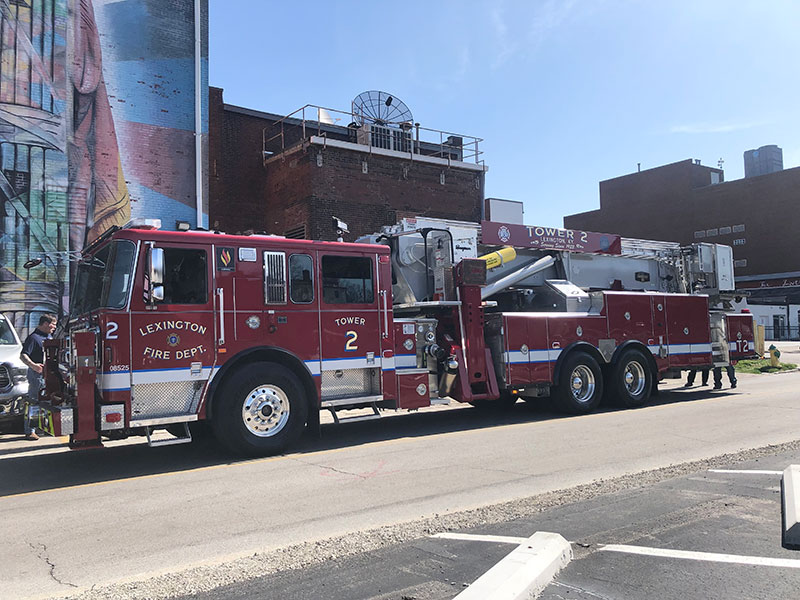
By Mike Ciampo
The city of Lexington is the county seat of Fayette County and the second largest city in Kentucky. Perhaps it’s best known as the “Horse Capital of the World” due to its location in the Bluegrass region of the state. The Bluegrass region is known for its highly fertile soil and makes for prime pastures for breeding thoroughbred race horses.
In 1775 the Lexington Fire Department was formed and in 1864 they became a career department. In 1973 the city and Fayette County governments merged combining the city and county fire departments. Today the department provides fire protection and prevention, emergency medical service, technical rescue, hazardous-materials, aircraft and dive rescue services to an area roughly 286 square miles.
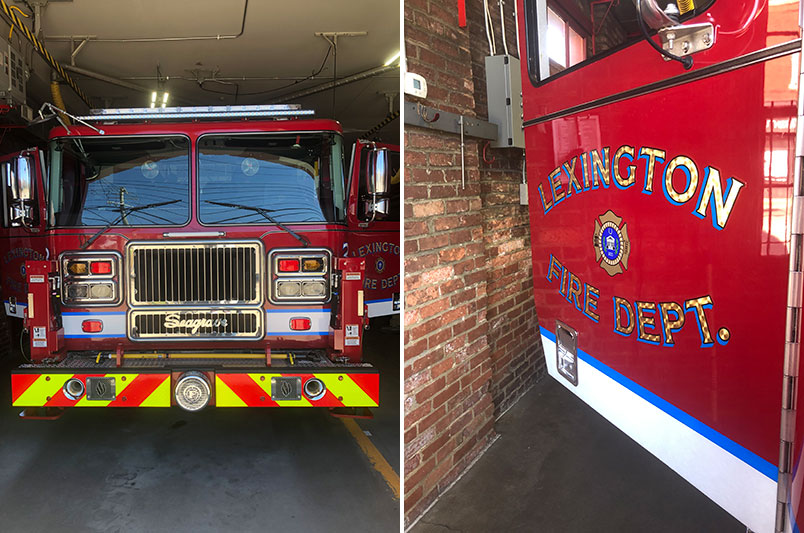
The department has five Battalions running out of 24 stations. There are 23 engine companies, seven truck companies, a heavy rescue unit, a hazardous materials unit, two air and light units, two wild fire units and one tender. All firefighters are trained to either Emergency Medical Technicians or Paramedics status. Many of the department’s companies around the city are trained in hazardous materials and technical rescue. The technical rescue teams often go outside the city limits to assist in large animal rescues, often involving horses due to their heavy presence in the area. The department can run everything from a high-rise fire to a grass fire in the rolling hills due to the overall diversity of their response area.
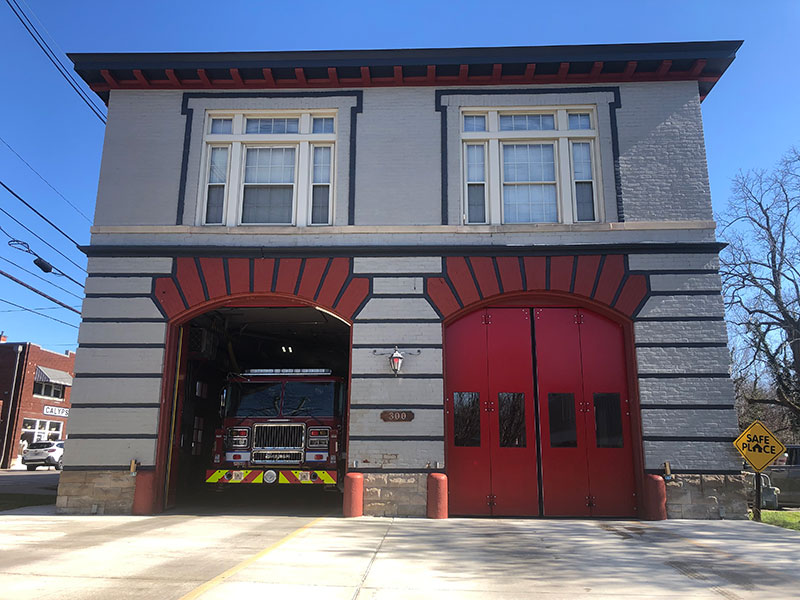
Tower 2 is currently assigned a 2019 Seagrave 95’ Aerialscope tower ladder stationed with Engine Company 5. It’s a beautiful old two bay firehouse built in 1905. Due to its proximity to the University of Kentucky, whose mascot is the Wildcats, the station earned the nickname of the “Fire Cats”. Tower 2 is built on a Capitol chassis with a tilt-cab and stainless steel body. It is powered by a 500hp Cummins diesel engine and has a six speed Allison 4000 series transmission with a Telma retarder. The rig has Rosco heated mirrors to assist the chauffeur while operating in inclement weather. To have better visibility there are also six-inch convex mirrors mounted on the cab to provide visibility to the area in front of the cab. For improved safety, there is a Whelen emergency light package, Whelen Pioneer Plus LED floodlights: two on the top of the cab and two on the rear of the body. While a telescoping LED light is attached to the rear of the bucket to enhance overall visibility during bucket operations. While responding, the apparatus will be able to warn other vehicles and pedestrians by using the Federal Q siren and two Grover air horns mounted in the front bumper.

The rig is painted all red and the boom is painted white. Running along the bottom of the cab is a wide white reflective stripe outlined with a blue stripe on the top and bottom. The striping also runs along the bottom portion of the apparatus body. On the rear compartment the stripe has spacing for the “T2” identification. The front bumper and rear of Tower 2 has DOT reflective chevron striping for better scene visibility. The front cab doors have gold leaf Lexington Fire Department with the department’s patch between the signage. The crew cab doors have Tower 2 signage, also in gold leaf.
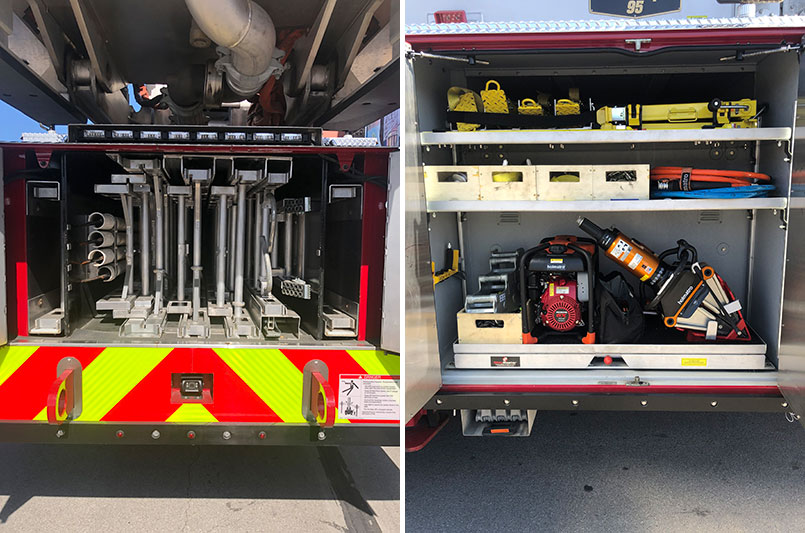
On the bed section of the boom, a large sign has Tower 2, Lexington, KY. Serving Since 1922 and the house’s “FireCat Lodge” company logo affixed to it. On the tower’s bucket doors, a large 2 is affixed to each one and the front of the bucket sports the signage Lexington. On the bucket there is a newer innovation that isn’t so prevalent among Aerialscope towers. A two-piece bracket attachment is affixed to the outside of the bucket, which accepts a roof ladder. The upper bracket sits on the top rail of the bucket and the lower bracket sits on the outer deck of the bucket.

The roof ladder can be put into these brackets and be deployed over a high parapet wall. Depending on the angle of operation, the ladder may only have to be stowed in the top bracket to allow it to be used. Some departments are ordering shorter roof ladders (8’-10’) to help units deploy them over the parapet and into the brackets. In addition, if the unit was aware of the high parapet, they could “fly” with the ladder stowed in the brackets and to the roof, as long as there were no overhead obstructions such as trees or wires.
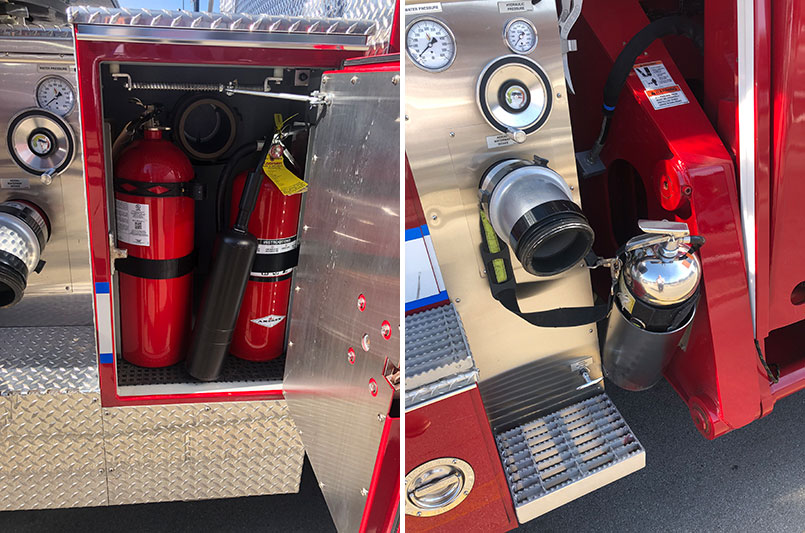
Tower 2 carries an assortment of tools, equipment and ladders on their apparatus. Their vehicle extrication equipment is located in the rear high sided compartment. Sitting on the lowest pull-out tray are Holmatro extrication tools, power generator, assorted extrication brackets in a pull-out box and a Rhyno windshield cutter in a utility bag.
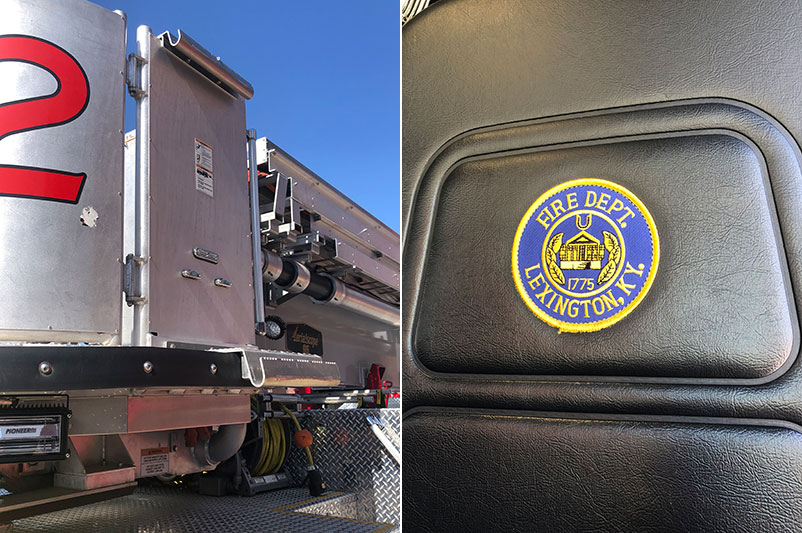
On the middle shelf of the compartment, there are four storage boxes holding assorted webbing and tie-down straps, chain and tool attachment items. Also on the shelf, the unit stores its hydraulic hoses for the extrication tools. On the upper most shelf sit a variety of rescue jacks.
The rig’s saw compartment has a Husqvarna K750 rotary saw on the upper shelf and a Stihl MS462C chain saw on the lower shelf. The lower shelf also has storage brackets for fuel cans and blade changing equipment. On the wall of this compartment, there is storage for their assortment of circular cutting blades. The unit carries its pressurized water can on a bracket attached to the outrigger and two dry chemical extinguishers are stored in a smaller compartment just behind the crew cab.
The truck is equipped with a full assortment of ground ladders and even has a 10-foot folding ladder stored in a compartment on the boom near the escape ladder. To power electrical equipment there is a portable generator while the rig is equipped with a Harrison PTO generator with Hannay cable reels and portable lighting devices.
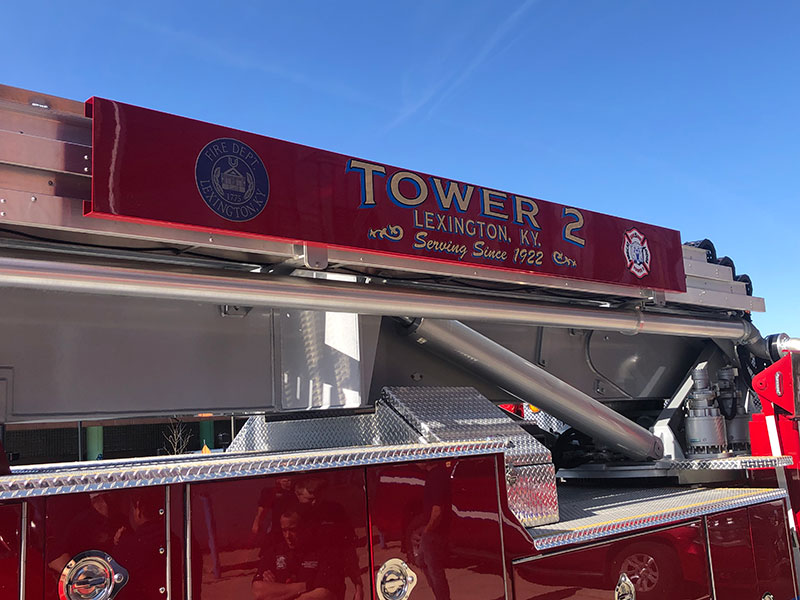
Recently the Lexington Fire Department placed another Seagrave Aerialscope in service at Tower Company 4, giving them more flexibility to operate on the fireground and at emergency scenes in their diverse response area.
Michael N. Ciampo is a 37-year veteran of the fire service and a Lieutenant in the Fire Department of New York. Previously he served with the District of Columbia Fire Department. He has a bachelor’s degree in fire science from John Jay College of Criminal Justice. He is the lead instructor for FDIC International Truck Essentials HOT program. He wrote the Ladders and Ventilation chapters for Fire Engineering’s Handbook for Firefighter 1 & 2 and the Bread and Butter Portable Ladders DVD. He is featured in Training Minutes truck company videos on FireEngineering.com. Recently he wrote the textbook Tower Ladders, Tactics, Tips & Tales.

